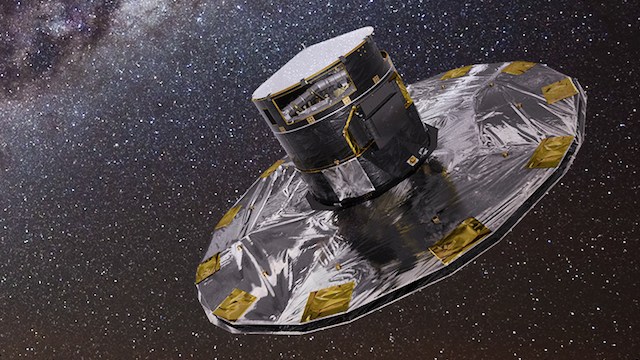SUMMARY
This is AI generated summarization, which may have errors. For context, always refer to the full article.

PARIS, France – A billion-dollar star-hunting telescope slotted into its operational orbit Wednesday, January 8, prior to harvesting data for the most detailed map yet of the Milky Way, the European Space Agency (ESA) said.
The telescope, Gaia, was launched from ESA’s base in French Guiana three weeks ago, then journeyed towards L2, a gravitationally stable point in space some 1.5 million kilometers (900,000 miles) from Earth.
After a final maneuver Wednesday, Gaia settled into a 180-day orbit around L2, the ESA statement said.
A small course correction will be made next week to complete the positioning maneuver.
“Entering orbit around L2 is a rather complex endeavor, achieved by firing Gaia’s thrusters in such a way as to push the spacecraft in the desired direction whilst keeping the Sun away from the delicate science instruments,” said spacecraft operations manager David Milligan.
The instruments on board the 740-million-euro ($1.02-billion) device, the most sophisticated space telescope ever built by Europe, will now be tested and calibrated for another four months, before entering the five-year operational phase.
Gaia is scheduled to collect data on a billion stars, charting their positions and motion, temperature, luminosity and composition.
This will yield the most accurate 3D map of the Milky Way yet, and allow astronomers to determine the origin and evolution of our galaxy, said ESA.
Gaia will sweep its two telescopes across the entire sky and focus their light simultaneously onto a single digital camera — the largest ever flown in space with nearly a billion pixels.
The telescope will observe each star an average of 70 times, said ESA, “after which the data archive will exceed one million gigabytes, equivalent to about 200,000 DVDs worth of data,” said the statement. – Rappler.com
Add a comment
How does this make you feel?
There are no comments yet. Add your comment to start the conversation.